Town Hall, D�n Laoghaire
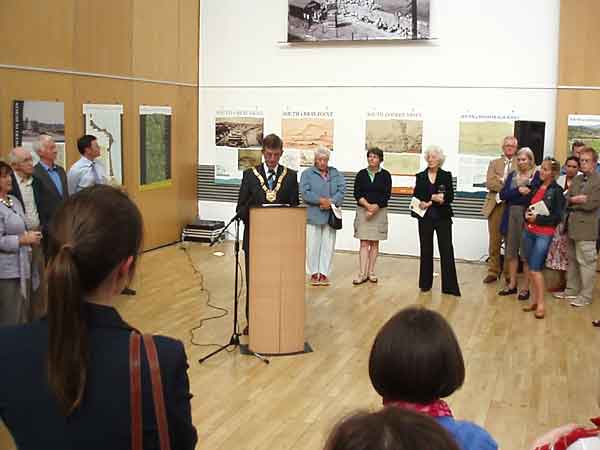
This excellent exhibition was opened on 30 June 2011, by the Cathaoirleach of D�n Laoghaire and Rathdown County Council (above).
It traces the history of the Martello Towers and shows how they were built in 1804/5 along the coastline of Dublin Bay as a defence against an expected French invasion.
It deals with the overall background to the adoption of the Martello Towers and highlights general aspects of the towers as a group, for example, their siting in such a way as to ensure overlapping fire. It then goes on to give the history and present day situation of each of the towers (and batteries) individually.
For example, Tower No.7 on the south side of the bay has been restored by Niall O'Donoghue. The specially cast cannon on the restored tower was inaugurated on 12 July 2008 with a firing from the crown of the tower. One of the two panels in the exhibition dealing with this tower is shown below.
It traces the history of the Martello Towers and shows how they were built in 1804/5 along the coastline of Dublin Bay as a defence against an expected French invasion.
It deals with the overall background to the adoption of the Martello Towers and highlights general aspects of the towers as a group, for example, their siting in such a way as to ensure overlapping fire. It then goes on to give the history and present day situation of each of the towers (and batteries) individually.
For example, Tower No.7 on the south side of the bay has been restored by Niall O'Donoghue. The specially cast cannon on the restored tower was inaugurated on 12 July 2008 with a firing from the crown of the tower. One of the two panels in the exhibition dealing with this tower is shown below.
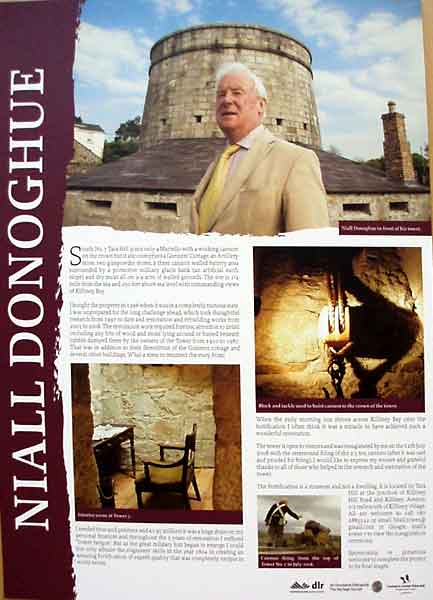
This is in stark contrast to the havoc wreaked on Tower No.6 by Victor Enoch in the early 1970s. Victor had the gall to portray himself as a bit of a Martello Tower afficionado. He actually published a booklet on the Towers. Nevertheless, when it came to his own tower, he built two additional storeys on top of it which degraded the tower itself to the status of a mere base structure.
The view below, hung in large format high on the wall of the exhibition, and taken from No.5 Battery in Shanganagh, might lead you to believe that you were looking at No.6 tower. However, the tower itself is obscured by a more recent building in front of it and all you can actually see is Victor's added two storey sun palace. I have very strong feelings on this, but I must say the exhibition's drafters have dealt with it in a most discrete manner.
The view below, hung in large format high on the wall of the exhibition, and taken from No.5 Battery in Shanganagh, might lead you to believe that you were looking at No.6 tower. However, the tower itself is obscured by a more recent building in front of it and all you can actually see is Victor's added two storey sun palace. I have very strong feelings on this, but I must say the exhibition's drafters have dealt with it in a most discrete manner.
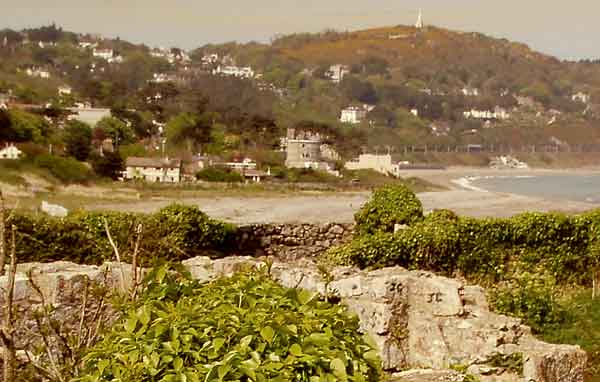
No.8 Battery, at the junction of the current Strathmore and Station Roads, was demolished to make way for the railway, but some of its remains were used in constructing the current underpass to the beach. The panel below has a photo of one of the wall stones in the underpass where the curved indentation clearly shows it was originally the base for a cannon carriage rail.
The panel also shows ground plans for Martellos No.6 and No.7 and Battery No.8. These plans and others in some of the other panels were unearthed by Niall's diligent research team in Kew.
The panel also shows ground plans for Martellos No.6 and No.7 and Battery No.8. These plans and others in some of the other panels were unearthed by Niall's diligent research team in Kew.
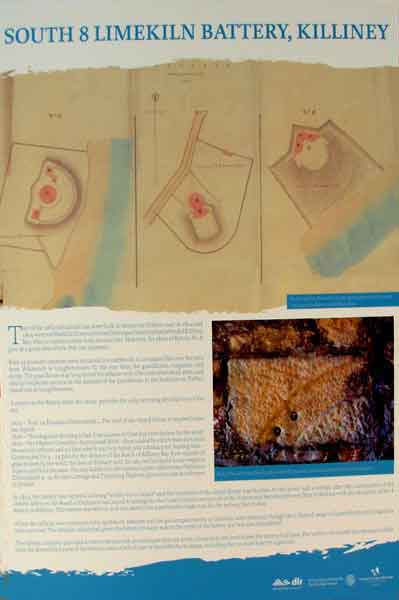
That same research team, Niall's sister and her husband, also turned up the long lost elusive La Chauss�e map of the bay, shown in the political background panel below. I had unearthed the La Chauss�e survey in the mid 1970s but the map defied all my efforts at finding it until the Kew team finally ran it down. And it was well worth it. It is priceless.

You will have gathered from all the above that the exhibition is well conceived, researched and presented. We have come a long way from the sloppy work of Sheila Sutcliffe in 1972, particularly in relation to the individual Dublin towers. To give her her due though, she was the first to undertake a study of the martello towers since they passed out of military hands..
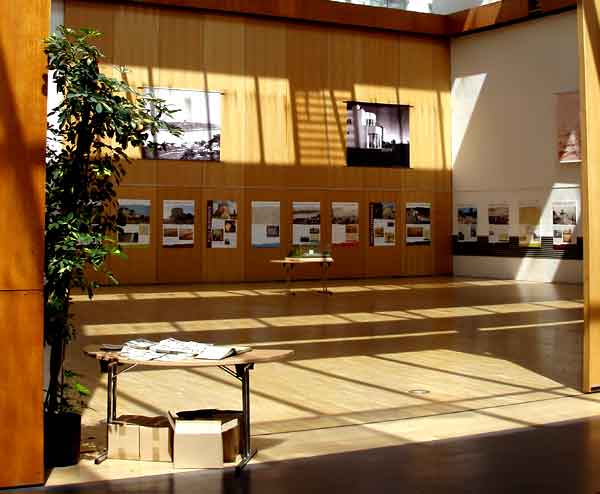
The exhibition, in the County Hall on Marine Road, D�n Laoghaire, ran from July 1st to August 28th 2011.

The excellent book above was published on 10 July 2012 and is based on the research and other work undertaken for the exhibition. You can hear Tim Carey, Heritage Officer for D�n Laoghaire-Rathdown County Council, talking about the book on Pat Kenny (when he can get in a word edgeways).